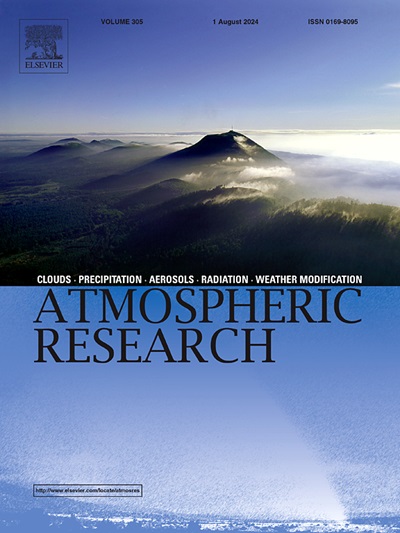Likelihoods of compound dry-hot-windy events are projected to increase under global warming
IF 4.5
2区 地球科学
Q1 METEOROLOGY & ATMOSPHERIC SCIENCES
引用次数: 0
Abstract
Dry, hot, and windy conditions are detrimental factors that can wither and burn up vegetation. Moreover, the combination of them, as represented by concurrences of low relative humidity, high temperature, and high wind speed, can lead to even higher impacts on agricultural production or wildfires, which is still under-assessed. Here we investigate spatial pattern of and changes in the compound dry-hot-windy (DHW) events in historical periods (1951–2014) and future periods (2037–2100) across global areas (including crop regions and burned areas) based on the fifth generation ECMWF reanalysis (ERA5) and climate model simulations from Coupled Model Inter-comparison Project 6 (CMIP6). An increase in the likelihood (or frequency) of compound DHW events is observed in historical periods and can be even higher in the future across global land areas. Specifically, the projected frequency of compound DHW events in the future period under the SSP585 scenario nearly triples the value in historical periods. Moreover, the increase in compound DHW events is also projected in ten main wheat exporters, in particular for Europe, Argentina, Turkey, and Brazil. Over global burn areas, the higher risk of compound DHW events during fire seasons is also projected in the future. Findings from this study can be useful for agricultural planning and natural resources management under a changing climate.
预计在全球变暖的情况下,复合干热风事件发生的可能性会增加
干燥、炎热和多风的环境是导致植被枯萎和燃烧的有害因素。此外,以低相对湿度、高温和高风速同时出现为代表的三者的结合,可能会对农业生产或野火产生更大的影响,而这一点目前仍未得到充分的评估。基于第五代ECMWF再分析(ERA5)和耦合模式比对项目6 (CMIP6)的气候模式模拟,研究了历史时期(1951—2014年)和未来时期(2037—2100年)全球地区(包括种植区和烧伤区)复合干热风(DHW)事件的空间格局和变化。在历史时期观测到复合DHW事件的可能性(或频率)增加,未来在全球陆地地区可能会更高。具体而言,在SSP585情景下,未来一段时间内复合DHW事件的预测频率几乎是历史时期的三倍。此外,预计在10个主要小麦出口国,特别是欧洲、阿根廷、土耳其和巴西,复合DHW事件也会增加。在全球烧伤地区,预计未来火灾季节复合DHW事件的风险更高。研究结果可为气候变化下的农业规划和自然资源管理提供参考。
本文章由计算机程序翻译,如有差异,请以英文原文为准。
求助全文
约1分钟内获得全文
求助全文
来源期刊

Atmospheric Research
地学-气象与大气科学
CiteScore
9.40
自引率
10.90%
发文量
460
审稿时长
47 days
期刊介绍:
The journal publishes scientific papers (research papers, review articles, letters and notes) dealing with the part of the atmosphere where meteorological events occur. Attention is given to all processes extending from the earth surface to the tropopause, but special emphasis continues to be devoted to the physics of clouds, mesoscale meteorology and air pollution, i.e. atmospheric aerosols; microphysical processes; cloud dynamics and thermodynamics; numerical simulation, climatology, climate change and weather modification.
 求助内容:
求助内容: 应助结果提醒方式:
应助结果提醒方式:


